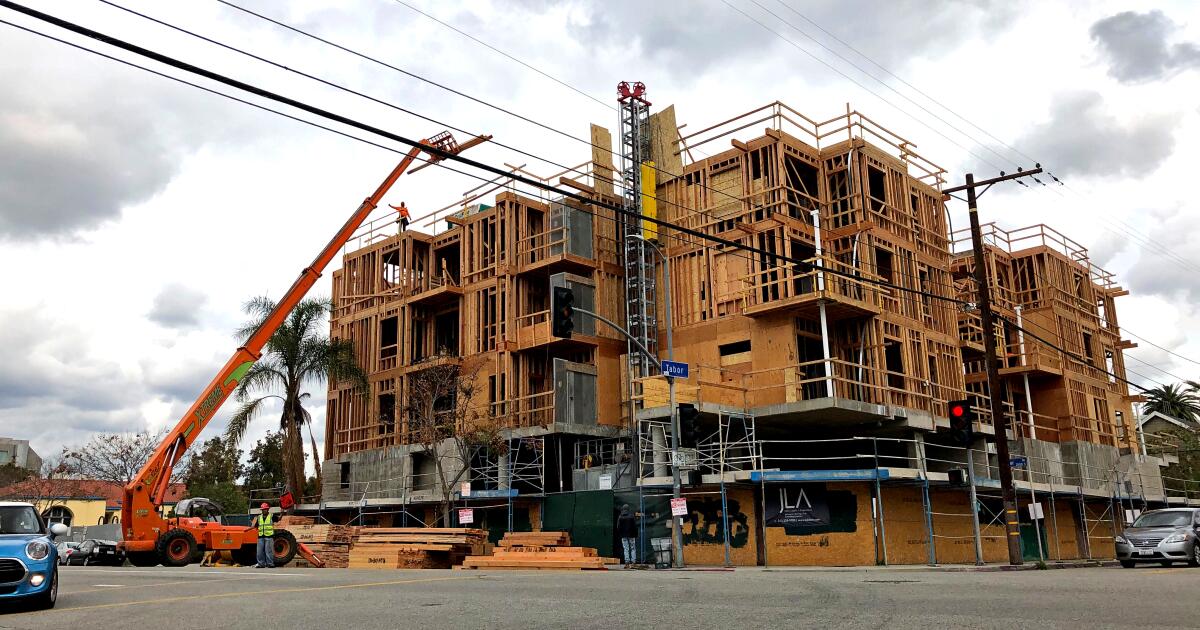Los Angeles City Council Votes to Boost Housing Development
The Los Angeles City Council on Tuesday voted to boost housing development in existing high-density residential neighborhoods and along commercial corridors, while leaving single-family zones largely untouched.
Incentives for Affordable and Market Rate Units
In a 15-0 vote, the council asked the city attorney to draft an ordinance to carry out that plan, which provides incentives to build both market rate and affordable units. Once the ordinance is drafted, it will come back to the council for final approval.
Response to State Housing Mandates
The rezoning effort is a response to state housing mandates that seek to alleviate the housing crisis by requiring the city to find land where an additional 255,000 homes can be built and have a plan to do so in place by mid-February.
Plan Approved by City Council Committee
Last month, a city council committee approved a plan that allowed for more building in existing high-density residential neighborhoods and along main streets in areas with jobs and good schools.
Incentives for Affordable Units
Under the plan, developers could exceed current limits on building in those areas if they include a certain percentage of affordable units.
Incentives for Single-Family Zones
Incentives to build in single-family zones would only apply if a property is owned by a public agency or a faith-based organization, which accounts for just a sliver of the city’s single-family lots.
Council Debates Denser Housing in Single-Family Areas
The council approved the plan Tuesday after briefly debating whether to allow denser housing in single-family areas, which some housing advocates have argued is needed to meaningfully reduce economic and racial segregation that single-family zoning has helped maintain.
Homeowner Groups Oppose Change
Homeowner groups have opposed doing so, saying allowing apartments in their communities would increase traffic and reduce opportunities to buy a house.
Councilmember Raman’s Proposal
Councilmember Nithya Raman, who represents a district that spans from Silver Lake to Reseda, put forth a motion that would have allowed mixed-income and 100% affordable apartment buildings within some single-family zones near transit while restricting developers to smaller-sized projects, which Raman referred to as “gentle density.”
Council Rejects Raman’s Proposal
This plan was less than some advocates called for, but council members rejected it by a 10-5 vote, choosing to leave single-family zones mostly untouched.
Conclusion
The Los Angeles City Council’s decision to boost housing development in existing high-density residential neighborhoods and along commercial corridors is a step towards addressing the city’s housing crisis. While the plan provides incentives for affordable and market rate units, it leaves single-family zones largely untouched, which some argue will lead to the displacement of tenants and perpetuate economic and racial segregation.
FAQs
Q: What is the goal of the Los Angeles City Council’s housing development plan?
A: The goal is to boost housing development in existing high-density residential neighborhoods and along commercial corridors to address the city’s housing crisis.
Q: What kind of incentives will be provided for developers?
A: The plan provides incentives for developers to build both market rate and affordable units, including exceeding current limits on building in certain areas.
Q: Will single-family zones be affected by the plan?
A: No, single-family zones will be largely untouched, with incentives to build in these areas only applying if a property is owned by a public agency or a faith-based organization.
Q: What was Councilmember Raman’s proposal?
A: Councilmember Raman proposed allowing mixed-income and 100% affordable apartment buildings within some single-family zones near transit, while restricting developers to smaller-sized projects.
Q: Why was Councilmember Raman’s proposal rejected?
A: Councilmember Raman’s proposal was rejected by a 10-5 vote, with some council members expressing interest in allowing more housing in single-family areas at a future time, but wanting a more tailored approach.


